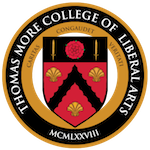To investigate the quack theory of animal magnetism, a hypothesis of Franz Mesmer, for whom mesmerism is named, King Louis XVI appointed a committee that included Benjamin Franklin, for whom the Franklin stove is named, and Joseph Guillotin, for whom the guillotine is named. The king’s own decapitation on that machine was, as an American high school textbook has it, fatal. Heads have always been important, although in many instances their value has been symbolic: In 1988 the New Zealand government got an injunction to stop Bonhams, the London auction house, from selling the preserved head of a Maori warrior; and in 1998 a New York dealer was fined $29,000 for selling Seminole and Peoria Indian skulls.
As Washington Irving told the tale of the headless horseman in The Legend of Sleepy Hollow, it is apposite that Sir Paulus Irving was captured in 1777 at Saratoga where Benedict Arnold was wounded on October 7 in a leg, the knee of which had been previously been shot up at Quebec. A fulsome agitator against the Americans was the second Earl of Dartmouth whose family name was Legge. The first Marquis of Anglesey, Henry William Paget, uttered the deathless line at Waterloo: “I have lost my leg, by God!” His son, Lord George Augustus Frederick Paget, survived intact the charge of the Light Brigade at Balaklava and is not to be confused with Sir George Paget, Regius Professor of Medicine at Cambridge, who fathered the vivi-sectionist author of Experiments on Animals. There is a monument to the Marquis’s leg at Plas Newydd which is visited by Welshmen living uneventful lives. Oxymoronically, the Isle of Man’s coat-of-arms depicts three legs, alluding to a three-legged Manxman who would have had an advantage at Waterloo.
The year of the Battle of Balaklava has the same mathematical sum as the year of the birth of Sarah Bernhardt, who lost a leg. More astounding is the coincidence of the ballerina Tanaquil Le Clerq, who has two legs but lost the use of both after contracting polio in 1956: In 1944, aged 15, she had been chosen by her future husband Georges Balanchine to star at the Waldorf-Astoria Hotel in a ballet for the benefit of the March of Dimes, about a ballet student stricken with polio.
Christian Archibald Herter walked with crutches after losing much of the use of his legs; he resigned as secretary of state in 1961 on the 50th anniversary of the publication of Biological Aspects of Human Problems by his father, the physician Christian, Sr. The elder Herter died on the centenary of the first Marquis of Anglesey’s resignation from Parliament, four years before the leg incident at Waterloo.
Deprivation of smaller bits of the body has not been without consequence. In 1739 the War of Jenkins’ Ear was started by the Spaniards cutting off the English captain’s ear, which he thenceforth displayed in an ornamental box. In 695 the general Leontius cut off the nose of Justinian II, so he has gone down in history as Justinian II Rhinotmetus (“The Noseless”). Rhinotmetusness did not diminish his ability to fight, as the loss of a limb would have; and it did not affect his ability to govern, as the loss of a head often has. But it was an aggravation added upon constant harassment by the Bulgarians and Armenian Arabs. Justinian wanted Pope St. Sergius to endorse the second Trullan Council and abolish clerical celibacy. The nosed pope’s moral victory over the noseless emperor was commemorated by a bust of Sergius at the Church of Santa Susanna, which was rubbed so much for good luck that the nose came off.
In the 1544 conspiracy of the Kentish fanatic Sir Thomas Wyatt against Queen Mary, one of the lieutenants shot an arrow into the courtyard at Whitehall, striking off the nose of an attorney of Lincoln’s Inn. The royal guardsmen cried out, “All is lost! Away! Away!” Courageous “Bloody” Mary Tudor cried back, “Fall to prayer!” and the day was won. The parboiled body of Wyatt was quartered and displayed in four parts of London. Mary had been betrothed to the Dauphin of the longest-nosed monarch on record, Francis I, at the age of two in 1518, when De Gomez first sighted the proboscis monkey of Borneo—which is addendum to Pascal’s belief that the whole face of the earth would have been changed if Cleopatra’s nose had been shorter.
Moral detachment is more to be desired than physical detachment is to be feared. That, at least, is our gloss on the Lord’s point about plucking out the eye and cutting off the hand. Language so graphic inevitably is most offensive and tasteless to those who are most carnal and vulgar.

